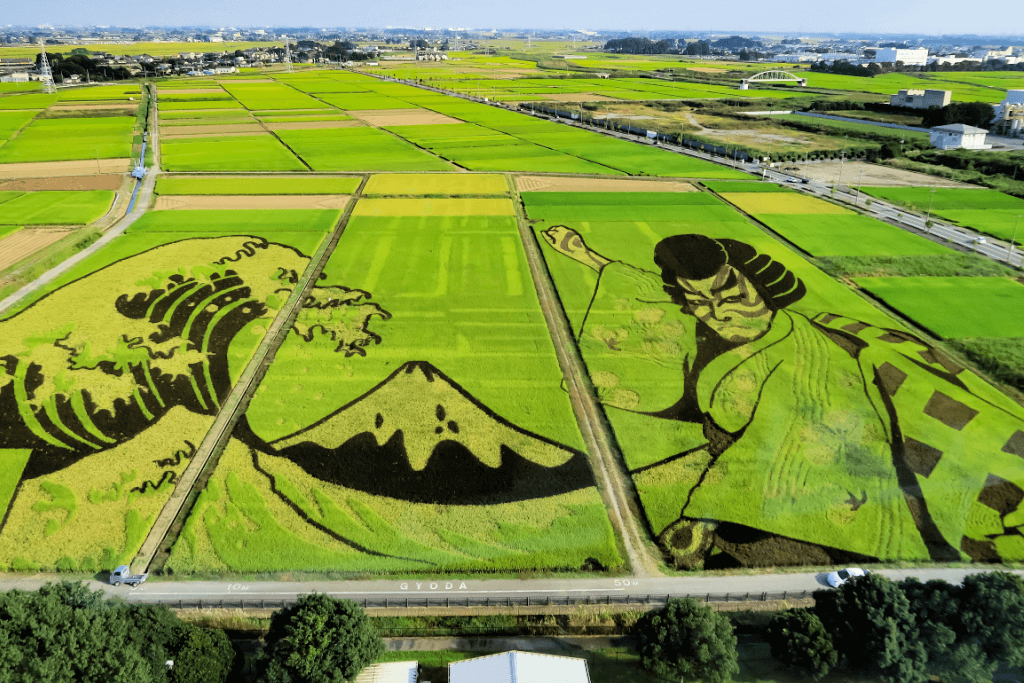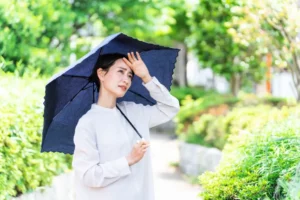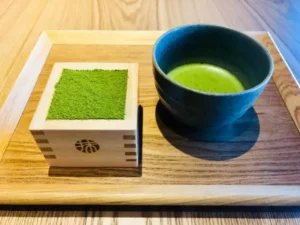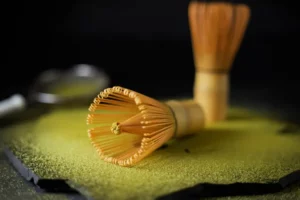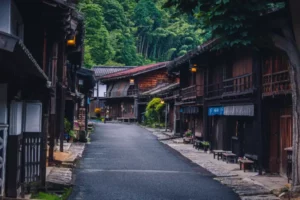The beauty of Japanese art forms such as origami and wabi-sabi are well-known and appreciated worldwide. Most Japanese art forms are hundreds or thousands of years old and connect to Japanese history and culture. On the other hand, rice paddy art is a new art form created only within the past few decades. It uses rice plants to create living artwork on a massive scale.
This newly emerging art form uses rice strains of different colors. When planted in the paddies, the colored rice forms detailed images when viewed from above. Rice paddy art is new but is very important to the economies of rural communities in Japan. And the results are spectacular. Rice paddy art, or tambo art, originated in the village of Inakadate. The small town in Aomori Prefecture has a long history of rice production dating back over 2000 years.
Table of Contents
ToggleHow did rice paddy art begin?
Like many countryside villages in Japan, the population of Inakadate has shrunk over the years. This decrease in population has many causes. The economies of these villages sometimes suffer when there is less demand for their crops. Also, farmers retire and sell their fields to make room for houses and businesses. The result is younger residents leaving these rural areas for the city to find work.
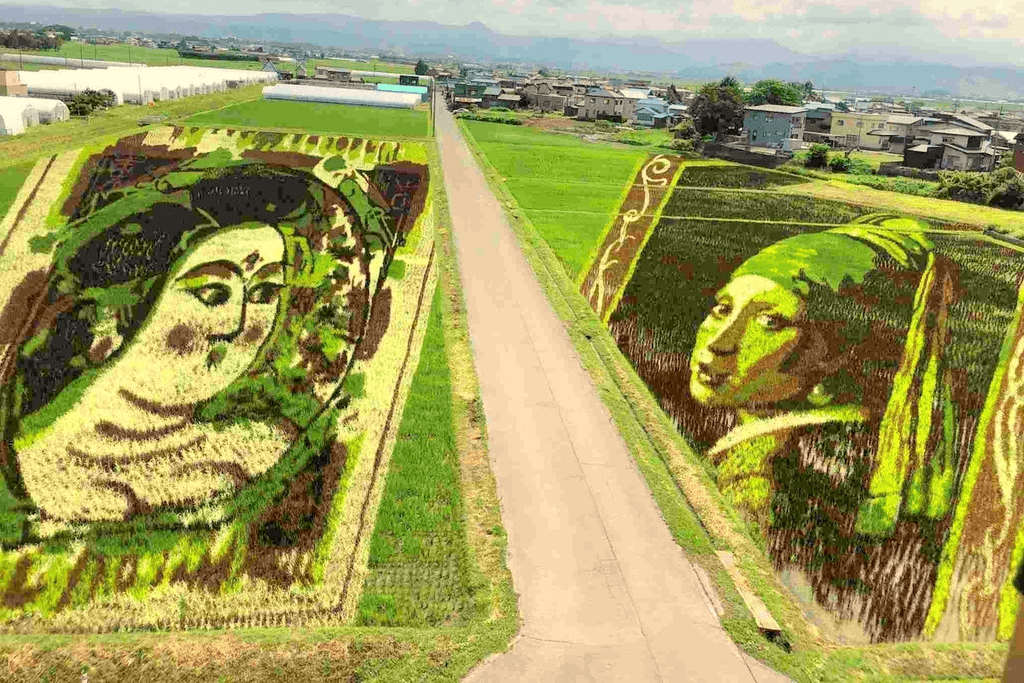
In the 1980s, rural towns like Inakadate received yearly government funds to support their communities. However, when the funding stopped, towns had to find alternative ways to generate income. To face this new challenge, Inakadate built a rice museum to attract visitors and bring in much-needed income. However, the museum’s success fell below expectations.
Koichi Hanada, an employee at the Inakadate Town Hall, had the problem. The rice museum idea failed, but he knew rice farming could help the community. Then, he conceived the idea of tambo art after observing children planting differently colored rice plants. He imagined planting rice of many colors to fill an entire rice field, and rice paddy art resulted.
Are you looking for some delicious snacks? Check out Sakuraco! Sakuraco delivers traditional Japanese snacks, teas, sweets, and snacks from local Japanese makers directly to your door so you can share more of Japan’s rich culture.
How do people create these large rice paddy images?
Hanada and 20 other town hall workers created the first tambo art paddy in 1993. Together, they hand-planted an entire field. The result was an image of nearby Mount Iwaki with two colors. Creating a large, detailed image using “upland” rice is easier. This is a special variety of rice that does not require flooded fields. Planting the rice in water would not only be more tiring, but It would also cause the rice to grow differently and make the images much less accurate.
The results were disappointing; the image was planned on paper, so the dimensions of the resulting paddy picture could have been more accurate. Hanada and his crew learned from their mistake and began planning the images on a computer instead. Also, instead of planting the field alone, they asked volunteers from the village to help.
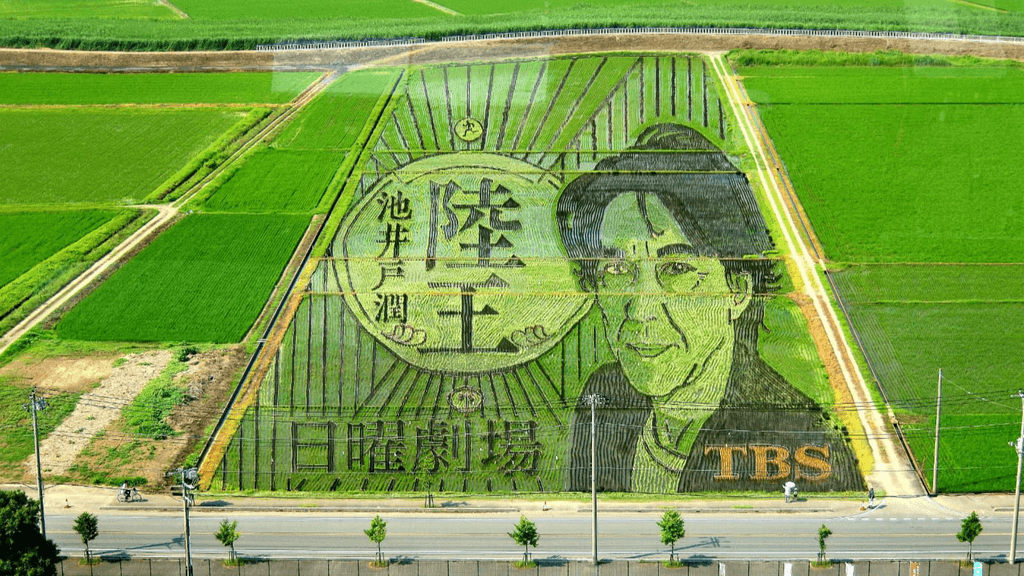
As a result, the response was overwhelming. Hundreds of residents volunteered to help with the project, and it became a community event. First, markers representing different colors were placed at special points in the paddy. Then, the volunteers were each assigned colored rice to plant at the matching markers. In April, the fields are planted in a fraction of the time, and everyone in the village can contribute to the project.
The upland rice varieties in paddy art have been farmed in Inakadate for millennia. These are ancient varieties of many colors, such as white, yellow, red, purple, and green. Designing the images on a computer also allowed the planners to use all available colors. The result was much more accurate images and even more detailed pictures.
Where else can I view this type of art?
As the growing seasons for rice in northern Japan end in October, thousands of visitors visit during the summer, resulting in hours of traffic jams and crowded streets in the normally quiet village. Initially, the small town needed more infrastructure to support a large influx of people. Thanks to the project, the town raised enough money to build Tamboato Station on the Konan Line. The project has continued to be a success. A second paddy and viewing tower were added, and the town is now negotiating with farmers on the surrounding land to increase the sizes of their canvases.
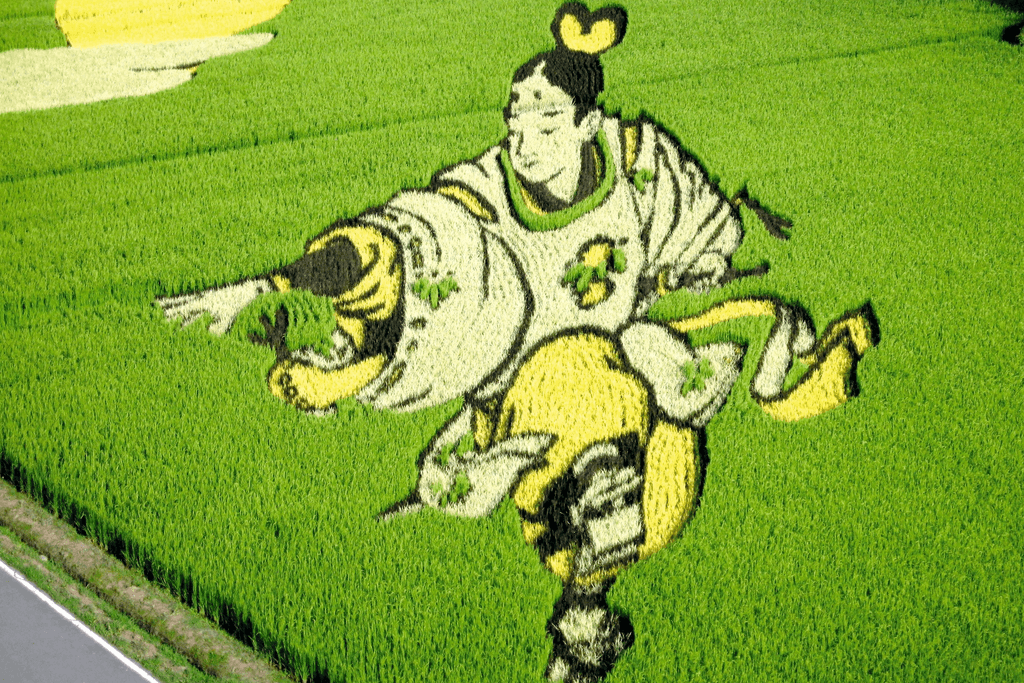
Other rural communities in Japan followed the example set by Inakadate. Today, rural communities all over Japan are revitalizing their communities and bringing in much-needed income. If Inakadate is too far away, you can also view tambo art in the following towns:
- Asahikawa, Hokkaido Prefecture
- Yonezawa, Yamagata Prefecture
- Shibata, Niigata Prefecture
- Akitakata, Hiroshima Prefecture
- Nagahama, Shiga Prefecture
Are you interested in visiting some of these smaller villages and towns? You can experience a new and unique art form and support rural communities. Let us know in the comments below!


